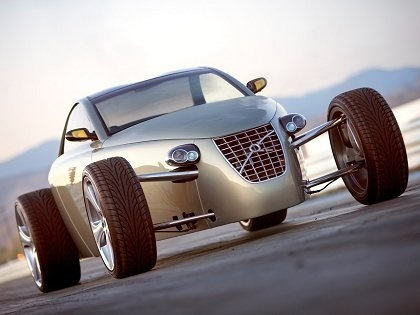2001 BMW Z29 Concept
- Story Cars

- Feb 18, 2024
- 2 min read
In 2001, BMW Technik GmbH, in collaboration with BMW M GmbH, introduced the groundbreaking BMW Z29 concept, a two-seater sports car designed to exemplify the pinnacle of lightweight construction. This innovative prototype, later unveiled in 2006, set out to redefine conventional automotive norms, combining distinctive design elements, cutting-edge materials, and a focus on optimizing performance.
The Z29's foremost design principle centered around the reduction of vehicle weight, a mission accomplished through the incorporation of advanced materials. Notably, the passenger cell of the sports car was crafted from carbon-fiber-reinforced plastic (CFRP), a material derived from the high-performance world of Formula 1. Additionally, aluminum was employed for constructing the rear axle, front and rear modules, and the double-wishbone front suspension. These choices resulted in an impressive weight-to-power ratio of 3.4 kg/hp.
Under the sleek exterior of the Z29 lies the power of the in-line six-cylinder engine borrowed from the BMW M3 E46, delivering 338 horsepower and 269 pound-feet of torque. This potent engine, paired with a sequential six-speed gearbox, ensures dynamic performance with power directed to the rear wheels.
The Z29's exceptional performance metrics underscore its prowess. Weighing in at a mere 1,160 kg (2,557 lbs), the concept accelerates from 0 to 62 mph (0-100 kph) in a brisk 4.4 seconds, achieving a top speed of 168 mph (270 kph). This remarkable power-to-weight ratio positions the Z29 as a testament to BMW's commitment to pushing the boundaries of automotive engineering.
The Z29's design departs from traditional BMW aesthetics, featuring flowing lines, lambo-style doors, and a minimalist interior. The emphasis on asymmetry, both externally and within the cabin, contributes to its distinctive and unconventional visual appeal.
While the Z29 did not transition to commercial production, the knowledge gained during its development proved invaluable. The concept served as an educational exercise, offering insights into the possibilities of lightweight construction. Lessons learned from the Z29 have since influenced the design and engineering of subsequent BMW models, showcasing the enduring impact of this pioneering concept.
In summary, the 2001 BMW Z29 concept remains a symbol of BMW's innovative spirit, blending cutting-edge design with a commitment to technological advancement in the automotive industry.
Source: BMW Technik GmbH
Images: BMW































Comments